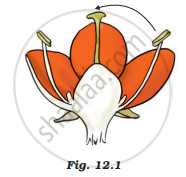Advertisements
Advertisements
प्रश्न
Enlist advantages and disadvantages of cross pollination
उत्तर
Advantages of cross pollination:
i. Offsprings produced are healthier and are well adapted to the environment.
ii. Seeds are produced in large numbers with higher viability and of better quality.
iii. Possibility of variations results in new desired varieties of plants, hence favours the process
of evolution.
iv. The offsprings show better vigour (hybrid vigour) and vitality.
Disadvantages of cross pollination:
i. The plants have to depend upon various external agencies.
ii. There is expenditure of energy due to the adaptations such as bright colour, nectar, fragrance,
etc. in attracting insects.
iii. There is considerable wastage of pollen grains.
iv. Since cross pollination result in the formation of new genotypes, it may also develop
undesirable characters in the progeny. Some desirable characters may get eliminated.
v. Genetic purity is not maintained.
APPEARS IN
संबंधित प्रश्न
Differentiate between the following:
Self pollination and cross pollination.
Define the term Pollinating.
Name of the part of the ovary which gives rise to:
Fruit ______
Describe the advantages and disadvantages of cross-pollination to the plant.
Coelacanth was caught in South Africa. State the significance of the discovery of Coelacanth in the evolutionary history of vertebrates.
Which one of these statements is incorrect?
The following statements seem to describe the water-pollinated submerged plants.
A botanist studying Viola (common pansy) noticed that one of the two flower types withered and developed no further due to some unfavorable condition, but the other flower type on the same plant survived and it resulted in an assured seed set. Which of the following will be correct?
Which type of pollination does Figure 12.1 indicate?

Describe any three adaptations in anemophilous flowers.
What is hypohydrophily?
